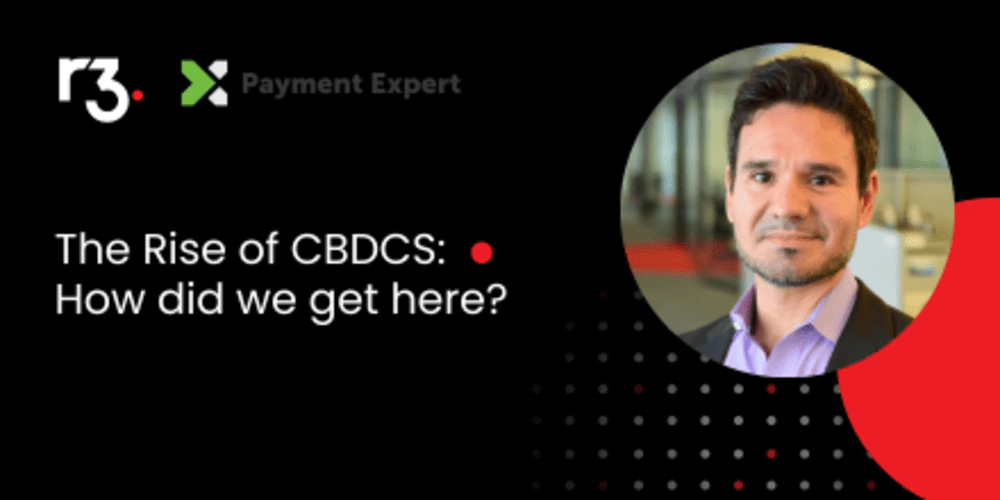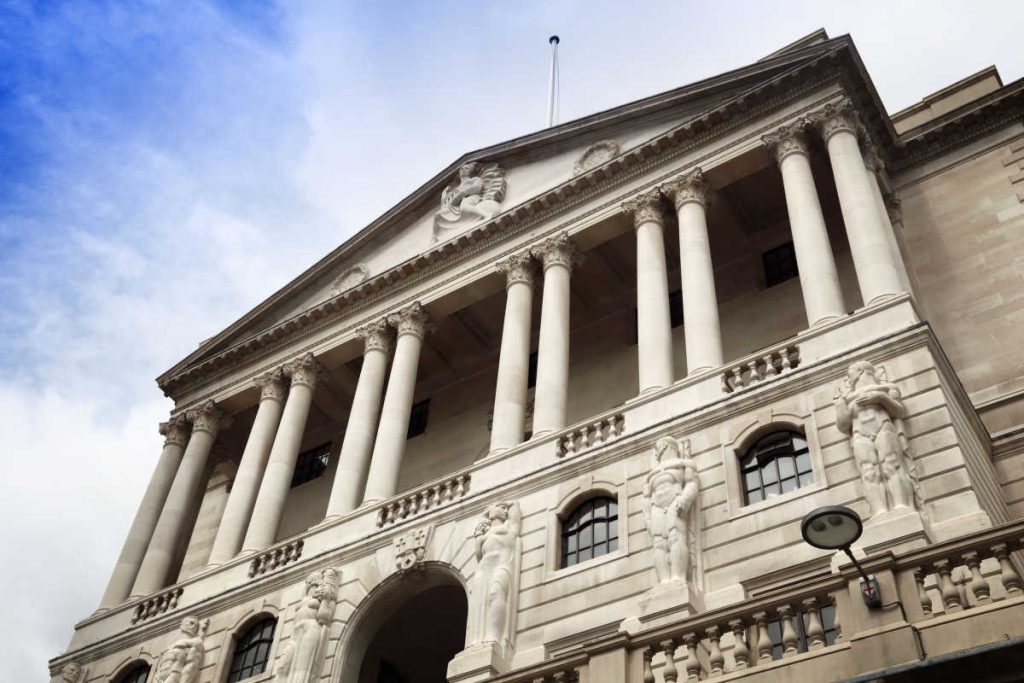In this second part of Payment Expert’s in-depth exploration into Central Bank Digital Currencies (CBDCs), we explore their integration into society and whether or not they will take on a life of their own as the future of currency and money, whilst also outlining potential risks.
In part one, we took a trip into the past with R3’s Head of Digital Currencies – Ricardo Correia – on his own journey into the world of payments, the origins of CBDCs, differences between commercial and central bank money, and why so many central banks and governments are embarking on CBDC projects.
Click below to read Part 1

But whilst the background of CBDCs has been established, the clarity over their function of use and essentially, what they will look like, remains unclear to a vast majority of people.
It may not be as complicated as one may fear, as Correia explains what would happen if a CBDC were to be launched today.
“You could use the funds in your CBDC account for ‘smart’ transfers and payments, and, in the future, for participation in regulated DeFi protocols”
He provided context: “Your CBDC would be accessible through your existing digital banking application, enabling you to transfer funds from your savings account to your CBDC account.
“You could use the funds in your CBDC account for ‘smart’ transfers and payments, and, in the future, for participation in regulated DeFi protocols, Web3, and the metaverse, all in a secure and trustworthy way.”
However, there are still questions regarding the security and privacy of CBDCs and their viability of being able to function within the next decade.
The main source of backlash towards CBDCs is how easily they can be traced and surveyed, which brings up numerous questions over privacy.
Sceptics have also cited that the implementation process for a CBDC would be substantial and could prove to be highly complex when establishing the digital currency alongside the pre-existing system in place for fiat and central bank currencies.

According to Correia, this raises questions about the regulatory and compliance frameworks and whether current financial service guidelines would need to be adjusted or reformed to accommodate CBDCs. Whilst he believes these will continue to exist of course, they will no doubt need to evolve.
“The same AML/KYC elements, privacy and security protocols, and legislation such as the Bank Secrecy Act, would all still apply.”
“If these new forms of money are going to be digital (or tokenized), and sent through apps and the internet, then the current rules that apply in those services would also likely apply to these forms of money as well. The same AML/KYC elements, privacy and security protocols, and legislation such as the Bank Secrecy Act would all still apply,” said Correia.
“This is not to say we won’t see the development of regulation aligned to these new innovations and technologies in the future. If the US FED were to advocate the issuance of a regulated fiat-backed stablecoin or Tokenised Deposits, for example, we would likely see specific and targeted regulation around these new types of assets.”
With the emergence of CBDCs, concerns have been raised about their financial stability and the potential impact on the banking sector. There are fears that CBDC transactions could develop a life of their own, which could lead to questions about the role of commercial banks and payments that currently flow through their systems.

During a panel discussion at the Fintech Talents Festival last November, CBDC and Market Infrastructure Director at Fireblocks, Varun Paul, outlined why these worries and stability issues could be put to rest through intermediaries in the establishment of a CDBC.
He stated: “Most central banks around the world and especially within the UK, there are two forms of stability: system stability and financial stability.
“They (central banks) are much more likely to design a CBDC if it is intermediated with all the same benefits, with just an intermediate in the middle with a retail customer at the end, and at no point can that retail customer do a run on the whole banking system.
“It requires intermediaries. It doesn’t always require banks, because central banks would like competition between banks and non-banks, but they will always want an intermediate in the system.”
If we are to believe that within the next decade CBDCs will become the natural evolution of money and the preferred bearer of trade, would this be the final nail in the coffin for cash?
Cash payments have been on a downward spiral over the last 10 years, which only accelerated even further through government recommendations for people to avoid cash payments due to preventing the spread of COVID-19.
This in turn, pushed consumers into finding digital alternative payment methods and have since stuck to those payment methods due to their seamless, quick and efficient process.
During the same Fintech Talents Festival panel, Macro Strategist at Deutsche Bank – Marion Laboure – acknowledged that CBDCs are a byproduct of the declining usage of cash, but also cautions not to totally alienate cash users.
“We also need cash for financial inclusion for those who do not have a bank account.”
She stated: “We are seeing less and less cash with one example being Sweden, where they have been using less cash since 2007, moving into a cashless society already.
“Cash as a means of payment has been declining, so that’s why banks have been looking at CBDCs but not just banks, regulators too to make CBDCs and cash complimentary. Because we also need cash for financial inclusion for those who do not have a bank account.”
Whilst the idea of an imminent CBDC might be a tantalising prospect to revolutionise how we interact with money, all indications from various governments and central banks have signalled that it may take longer than anticipated.

The UK government, whilst releasing a consultation on the possibility of a future digital pound, have maintained they are biding their time when it comes to releasing a CBDC, with 2030 being the reported year the country aims to integrate the digital currency.
Other countries have followed similar cautious paths, whilst some countries, such as the US, have starch opposers, in particular Republican Senator Ted Cruz, who proposed a bill that would ban any such potential of a digital dollar to be realised in the country.
There are many, many hurdles for CBDCs to manoeuvre through before an implementation process can begin. It could take years for an infrastructure to support CBDCs to be established, this comes before any such regulations and guidelines become drafted as well.
Despite this, CBDCs have risen exponentially into the minds of some of the world’s largest banks and governments, to the point where it almost feels as if you’re falling behind if you are not launching your own project into the digital currency.
Whilst we may not be close to realising the potential of CBDCs in the immediate future, and it will almost certainly experience some growing pains, the long-term impact will could alter how we interact with money and currency.























